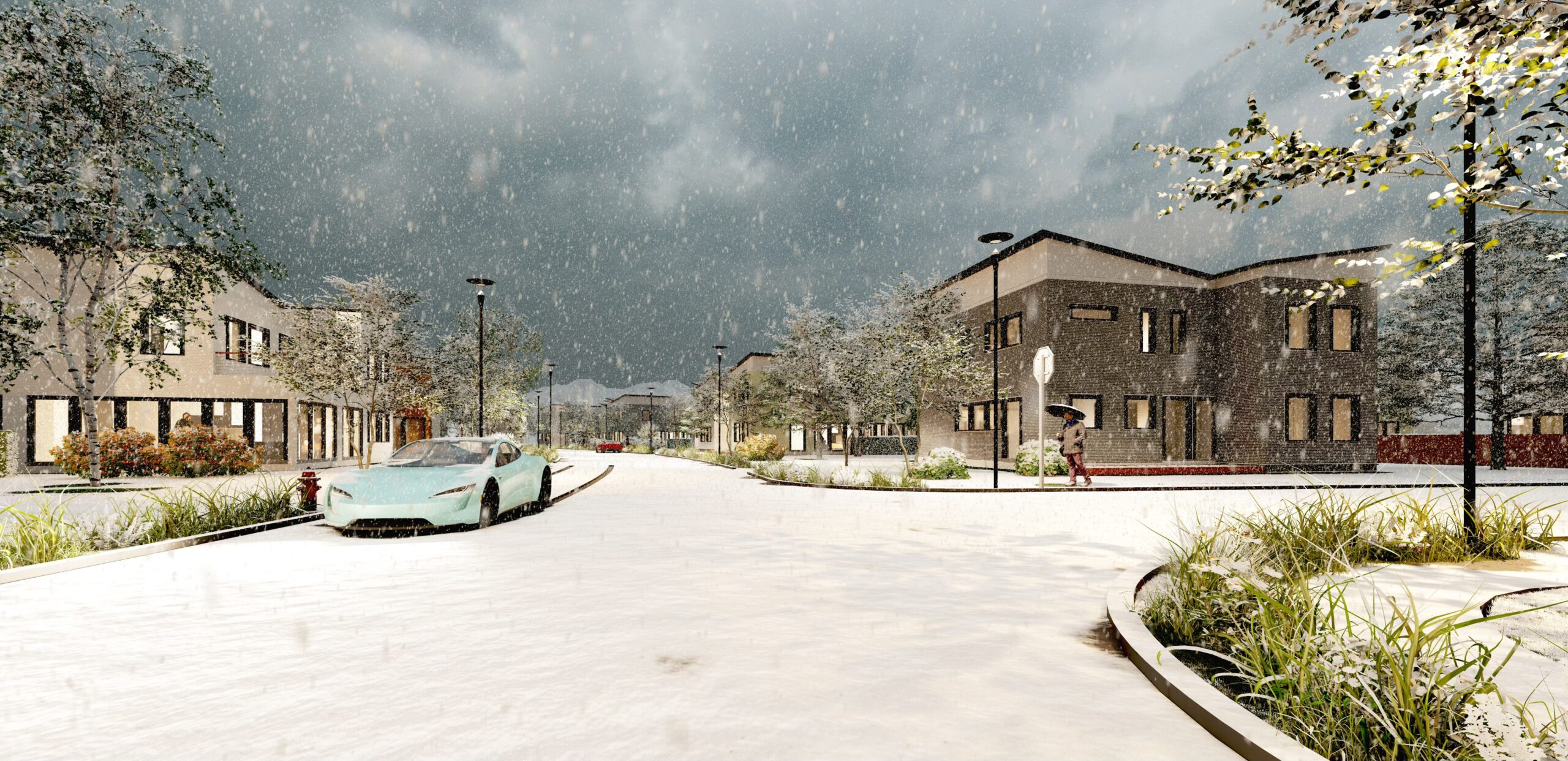A deeper look into the elusive yet nearly infinite potential of energy efficiency*
*this is part II, check out >part I<
Getting to “net-zero”, in other words reducing GHG emissions to a point where bad heating (global warming) is arrested and the global temperature stops rising, is not an end goal or destination, but a beginning.
We are living through the dawning of an age built on sustainable energy that will not last for 163 years (the combustion era, until today) but for many centuries, possibly millennia.
The shift is toward a completely new system, not one made in the image of the past.
“Mapping tomorrow’s energy system onto today’s world worked fine during a long period of relative stasis in the fossil fuel energy system. But it fares poorly at a time of transformational change… Don’t try to solve tomorrow’s problems using today’s assumptions.” – excerpt from RMI article The Eight Deadly Sins of Analyzing the Energy Transition.
Nowhere is this rapidly accelerating change and potential more apparent than in the reinvention of the built world, particularly housing. Facing some of the greatest challenges, from outdated construction to a notoriously entrenched status quo, the twin issues of abating GHG emissions and increasing affordability are major problems to be solved.
However, where there’s crisis, opportunity often lurks. Simply put – sustainable energy resources, solar + storage in particular, are creating the start of a new basis for not only energy production and consumption, but for the reweaving of the fabric of our economic system for wealth creation and distribution.
VPPs + Grid Interactive Efficient Buildings: the Tip of the Spear for Global Economic Transformation
What’s a VPP? According to Jigar Shah of the DOE LPO, “Virtual power plants, or VPPs, are utility-scale, utility-grade aggregations of distributed energy resources, such as rooftop solar and storage, smart appliances, and flexible commercial and industrial loads that deliver grid services. Fundamentally, VPPs can help balance supply and demand of electricity with a level of dexterity that traditionally was only used to flex supply.”
The US Department of Energy and its Loan Programs Office has quietly launched a game changing push to make virtual power plants a nationwide default.
Quote from Jigar Shah, Reuters:
“The goal for us is for the solar industry not to look like it’s ‘other’ and outside of the electricity system, where it’s sort of like a backup generator for homeowners,” Shah told Solar Power World at RE+. “The goal is for solar, and then all of these other pieces, whether it’s smart inverters, smart panels or batteries — for those to be integrated into the entire way in which the electric grid operates.”
What’s not so quiet about the push is how big it is and how fast it’s moving.
“For its part, the Department of Energy (DOE) anticipates lending support on the order of $100 billion to advance VPPs, Shah said. Sunnova’s inclusion of low- and moderate-income Puerto Ricans in its VPP project is being supported by $3 billion in loan support, while other applicants are already preparing $30 billion in loan requests.” – PV magazine
With this kind of backing, and speed, the Puerto Rico initiative is moving forward now, and nationwide VPP deployment appears highly likely in the years ahead.
What’s not clearly outlined in the VPP description above is, possibly, the most important feature; “Virtual power plants also enable consumers to become more active participants in the energy market by allowing them to generate and sell excess electricity back to the grid. This can provide a new source of revenue for homeowners and businesses with renewable energy systems and can help to reduce their electricity bills.” – Virtual Peaker
A Catalytic Delivery System for Virtual Power Plants with a 10X Multiplier
Two things will be needed for a world changing shift to begin as VPPs become widespread. First, regulatory frameworks that allow for equitable pricing to and from the utilities. Second, VPPs will need to become standard equipment in all new-built housing.
This will require a delivery system for construction of up to 1 million homes per year with integrated VPP systems, and a new way of thinking about the definition of what a “home” actually is.
From homeowner to private power plant owner-operator
The depth and importance of this is hard to grasp at first: why would an average home owner want to become a power plant operator? The answer is simple: money.
A lot of money. With the right home design that maximizes energy efficiency, a living system can be built that would mean not only zero utility bills for up to 25 years (with average energy use, in any climate), but could create a steady stream of income from the surplus energy intentionally produced to sell back to the grid. Maximizing energy efficiency is accepted for private jets and solar EVs, and soon will be for homes.
With energy prices rising rapidly and projected to accelerate higher as demand skyrockets, the total amount could offset a significant portion of the cost of the home itself.
In other words simultaneously achieve a 100% reduction in GHG emissions and a massive increase in affordability. Real cost of ownership would plummet.
How do we get VPPs into 1 million new homes per year?
Ah, the trillion dollar question. The first thing is for us as a society grasp and recognize the true value of turning 1 million new homes per year into catalysts for zero carbon economic transformation and renewal.
Next a framework for speed, scale and market penetration and transformation. At AM51 we have built a framework and comprehensive plan for this urgently needed metamorphosis.
First is a collaborative initiative that we call ULS (Ultimate Living System). ULS is not a private for-profit “moat” but, rather, a universal collaboration framework for integrative design and positive change.
Companies in VPP, MEP, Materials, Design and Planning and any number of contributing entities are being engaged.
The foundation, based on maximum and optimal energy efficiency can reach scale and speed through the adoption of Fractalize™ a completely unique, original prefabrication system, which produces any home design at ultra high performance levels with significant cost savings at scale.
Speed and scale are further accelerated by a national network of TTRF™ (Temporary Transportable Reusable Factories).
Finally a national push toward a tipping point of mindshare, built on overwhelming product superiority, turbo-charged with limbic resonance marketing to ignite aspirational demand, already a dormant yet soon to be explosive force.
This will be a crucial and necessary element, just as legacy automakers had to ultimately accept the transition to an all EV future, home builders and the general public will have to become aware of the multi-faceted need and life affirming power of this new definition of shelter. Public-Private partnerships must be a central component of the shift.
The two great misconceptions that constantly arise regarding the need for optimum energy efficient design
Cost:
Higher building cost is the most common assumption made, erroneously, when reacting to the potential for ultra-high performance design. This higher cost assumption is often simply invented without basis, or is extrapolated from scarce and unreliable data.
With a system like Fractalize™ cost parity is already a reality in single-unit quantity and significant cost reductions would kick-in at scale. This means zero (or less than zero) additional cost in exchange for up to 90% more energy efficient performance. 1

How is this possible? Propagated human intelligence.
Propagated human intelligence: better than software, more powerful than IP
Simply put, better design has zero cost at scale since it represents shared wisdom and thought.
Energy end-use efficiency’s potential is large and little-tapped. Yet all official studies substantially understate its potential and overstate its cost, because they focus on individual technologies without also counting integrative design that optimally combines those technologies.
The efficiency resource keeps getting bigger and cheaper as innovation, competition, and volume make energy-saving technologies more effective and less costly—both faster than they’re being applied.
— Amory Lovins, RMI
Why “some” efficiency is not enough
The inference that maximum possible performance (energy efficiency) in a home is “unnecessary” and 50% over BAU is “good enough” is fatally flawed thinking. To illustrate this imagine applying this logic to the cost of operating a private jet.
Jet aircraft fuel usage costs around $5,000 per hour (Gulfstream G550). At 50% of the optimum efficiency design this would double to $10,000 per hour. Oh, and staying in the air might be an issue.
This preposterous scenario is no less ridiculous when applied to homes as virtual power plants and income generating assets.
When energy = money, energy wasted is money lost; full stop. VPPs turn all energy produced into a source of value and cash. This shift makes design efficiency and building performance measured in energy a source of real, tangible wealth.
Finding an oil deposit on your property once meant guaranteed wealth. Solar and battery systems with VPPs means that every house can install a “solar oil well” that can easily generate far more than the initial cost of equipment, provided the home has optimized efficiency and the energy is monetized over time.
Turing the surplus energy, the unused energy after the needs of the homeowner are met, into a positive asset, is a key shift in how the sustainable energy transition must be understood.
And efficient building design and integrative systems design will be at center stage, not the periphery.
When energy = money, any energy wasted is money lost; full stop. VPPs turn all energy produced into a source of value and cash. This shift makes design efficiency and building performance measured in energy a source of real, tangible wealth.
— Author
This is why a catalytic delivery system, like Fractalize™ with TTRF™ and ULS is the missing link that, once incentivized and transformed into a market standard, can improve all aspects of our economic system. Not to mention the human and health benefits.
Until now there has been a huge impediment to understanding how energy saved through hyper-efficient design of homes and buildings, for example, could be of value beyond paying less for future energy bills.
VPPs and positive market based limbic resonance examples will accelerate the adoption of the most valuable configuration beyond any current expectation.

This Climate Solution is a Sleeping Giant
footnotes:
- How much thermal insulation should surround a house in a cold climate? All engineering texts (at least in English) say to specify just the thickness that will repay its marginal cost from the present value of the saved marginal heating energy. But this omits the capital cost of the heating system—furnace, ducts, fans, pipes, pumps, wires, controls, and fuel source. A 1984 sub- arctic-climate house so optimized saved ~99% of its space-heating energy with $1,100 lower construction cost, because superwindows, superinsulation, air-to-air heat exchangers, etc. cost less than the heating system they replaced. This approach has also been adopted in >20,000 EU and US “passive houses,” saving 75–95% of US-allowable heating energy with no extra capex. ↩







